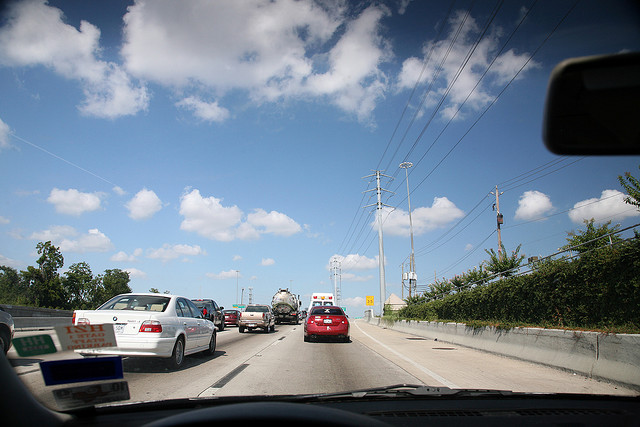How much is your time worth?
If you live in southern California and drive to work, the answer for some of you seems to be more than $17 an hour.
That conclusion is drawn from data contained in an Infrastrurist interview with Jack Finn, the head of toll services for HTNB, an infrastructure firm that designed Route 91 in Orange County.
Route 91 is one of nine roads in the U.S. offering High-Occupancy Toll access to its High-Occupancy Vehicle (HOV lane). As well as vehicles with two or more passengers, single-occupant single-driver cars can use the lane by paying a toll to enter what is known as a HOT lane.

Stuck in traffic, by Flickr user SMercury98
The goal of HOT lanes is to vary pricing enough to keep traffic flowing smoothly. If a HOT/HOV lane seems to be filling up with vehicles at certain times, the entry price for that period is raised until it discourages new entrants, and a new equilibrium is achieved.
Finn said that a 10-mile commute along a usually congested stretch of Route 91 takes 45 minutes at the height of rush hour. The HOT lane tolls during that period are set at $10, which he says keeps traffic flowing at 60 mph.
So at least some drivers are willing to spend $10 to cut 35 minutes off their commute. That translates $17.15 an hour, meaning they think their time is worth more than that rate. (Finn notes that rates in less affluent and less congested parts of the country usually top out below $4 per 10-mile stretch.)
HOT lanes have been criticized as "Lexus Lanes," a luxury affordable only by the very rich. Finn says that's not true, and that studies show people of all income brackets make the judgment that it's worth paying to save that time on a particular day.

china traffic main 630
HOT lanes now exist in Denver, Minneapolis, and San Diego, with more than 30 more under construction in locales as diverse as Miami and San Francisco.
Single-occupant access to HOV lanes has also been offered to drivers of hybrids in California, but those "Prius perks" will end next year, replaced by similar access for electric-vehicle drivers.
A 2005 study by the Texas Transportation Institute, at Texas A&M University, found that commuters lose almost 50 hours of their time--that's a full average work week--to delays in rush-hour driving each year. Those same delays now waste tens or hundreds millions of gallons of gasoline.
At $3 a gallon, fuel is still far cheaper than time. But tell us: Do you think paying $10 is reasonable to save 35 minutes?
Leave us your thoughts in the Comments below.













